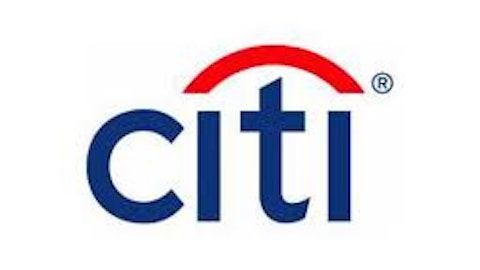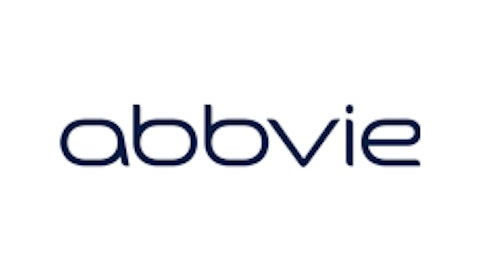With studies showing 33% of Americans with diabetes or pre-diabetes, it is obvious that the industry should be booming. Like most fields there is stiff competition in the industry. I recently wrote a piece explaining why it appears these companies should be good investments. Since then earnings have been released, so let’s see how they stack up now.

Lilly and Novo Nordisk posted different results in their Q4 results. Although Lilly posted better than expected earnings, revenues did decline by 1%. The patent expiry of Zyprexa led to the decrease, but other products such as Cymbalta, Forteo and Alimta nearly made the loss a wash. Novo Nordisk showed a solid 18% increase in sales growth, and net profits also increased by 25%.
Lilly forecasts earnings to increase 15% in 2013. Novo Nordisk expects to see around 10% growth in sales and operating profits.
Abbott Laboratories (NYSE:ABT)
is a test strip manufacturer that recently spun off a new company coined AbbVie Inc (NYSE:ABBV) which virtually split Abbott Laboratories (NYSE:ABT) in half. Abbott remained the diabetic manufacturer. Despite this spin off, Abbott posted solid numbers this past quarter as well as some expected declines. Although the company posted a 46% decrease in net income for the quarter, net sales increased by 4%. For the year, net income increased by over 26%, or $1.23 billion dollars. Net sales increased by over $1 billion as well.
Abbott’s CEO Miles White had this to say, “In 2012, we achieved a significant milestone in Abbott’s 125-year history with the creation of AbbVie while delivering another year of strong results. Abbott’s mix of diversified healthcare businesses and pipeline is favorably aligned with key healthcare and emerging market trends and well positioned to deliver top-tier growth in 2013.”
With over 40% of Johnson & Johnson (NYSE:JNJ)’s revenue acquired from medical devices/diagnostics, diabetes is again playing a major role in a company’s success. In Q4, medical devices/diagnostics sales rose to $7.38 billion dollars in the fourth quarter, an increase of 13.7%. Johnson & Johnson (NYSE:JNJ) expects to increase revenues this year by 7%, bringing the expected total to around $72 billion. This past quarter, the company’s sales increased 8% with the Synthes deal contributing 5.6% of that growth. It becomes obvious when looking at these numbers how significant of a role medical devices/diagnostics really are to Johnson and Johnson.
The last company we will look at today is the clear insulin pump market leader. Diabetes directly accounts for 10% of Medtronic, Inc. (NYSE:MDT)’s revenues. Indirectly (mainly complications from the disease) Diabetes accounts for 40% of the company’s revenues. However, I don’t want to talk about earnings or diabetes with this company.
Medtronic just acquired a 19% stake in LifeTech Scientific Corp., a Chinese maker of surgical instruments. This was a $46.5 million acquisition, with a $19.6 million note that is convertible to a stake of approximately 7.5%. In September Medtronic acquired the Chinese spine and joint maker Kanghui Holdings for $800 million.
Through its newest acquisition with LifeTech, Medtronic is now able to distribute LifeTech products. Medtronic said it may help with product development. LifeTech has sales forces in thirty countries which will help Medtronic to expand even more. They have been focused on Chinese growth for a while and even added 1,500 employees in 2012 – the majority of which were in China and India.
The Foolish Conclusion…
Diabetes will play a serious role in all of these companies moving forward. Rates of people with the disease are growing and unfortunately I don’t see why they would stop. Obesity is often followed by type two diabetes. As an investor and a type one diabetic myself, I am well aware of the complications. Diabetes is the leading cause of blindness, kidney failure, and accounts for more than 60% of all non-traumatic lower limb amputations. American’s spend approximately $200 billion as a direct result of diabetes every year.
It still appears that most of these companies should generate interest from all types of investors. Medtronic appears to be in prime position for growth, and is still fairly priced at 8.2% FCF yield. For bargain investors, Novo Nordisk is the cheapest buy with a 17% FCF yield. This doesn’t take anything away from the other companies as none of them are particularly expensive. The most expensive is Johnson and Johnson who shows a 6.1% FCF yield. There is risk in all investments, but all of these companies seem to be in a position to perform well.
The article The Expense Of Diabetes: Is It Worth It? originally appeared on Fool.com and is written by Tyler Wofford.
Copyright © 1995 – 2013 The Motley Fool, LLC. All rights reserved. The Motley Fool has a disclosure policy.





